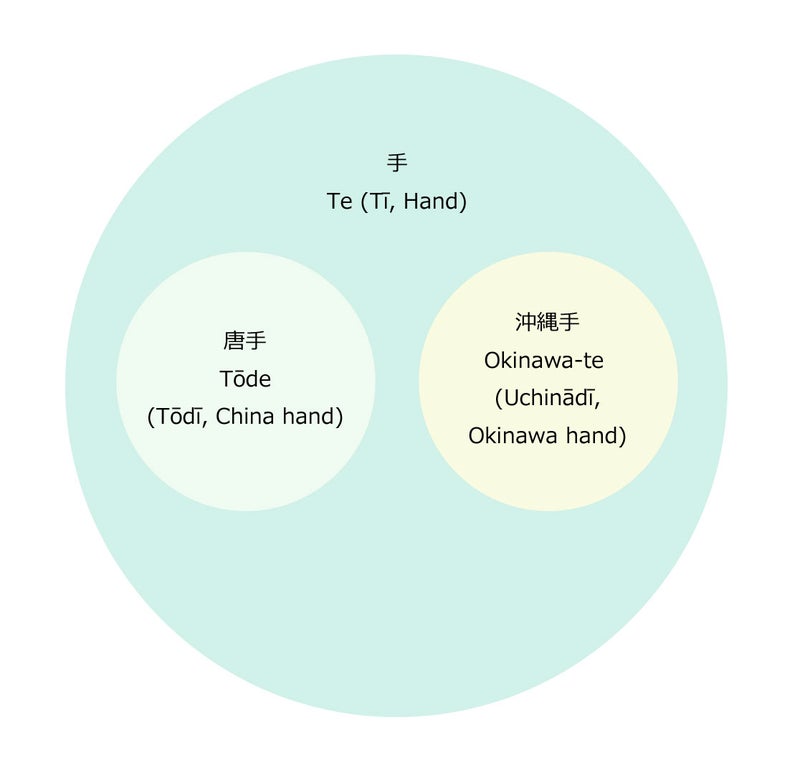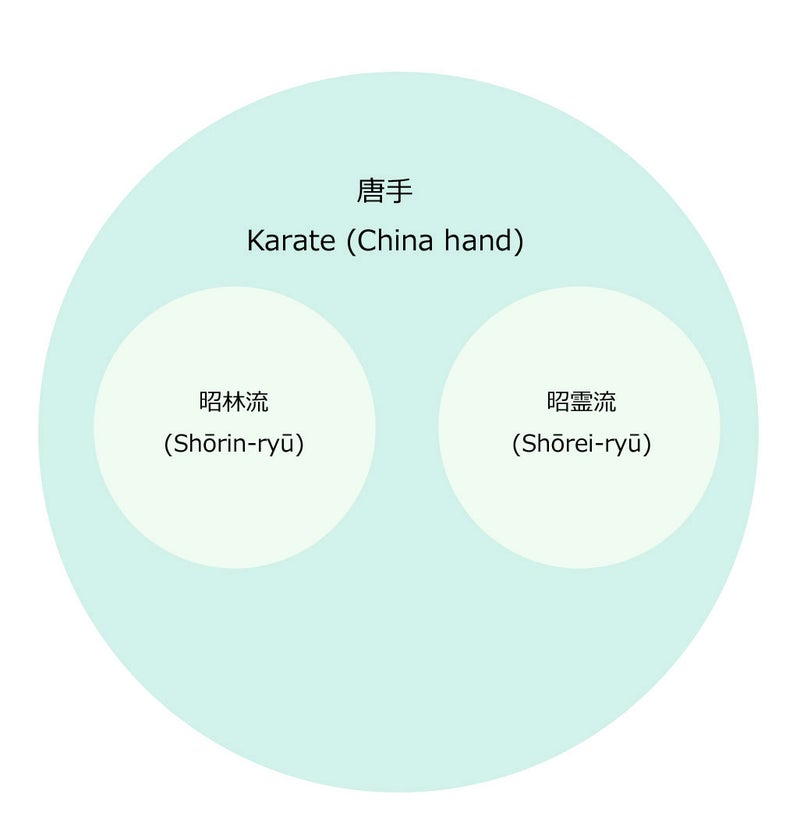https://ameblo.jp/motoburyu/entry-12761854304.html
2022-08-31
Written and translated by Motobu Naoki
Yoshimura Chōgi (1866 - 1945) of the Yoshimura Udun wrote the following sentence in his "Autobiography of Martial Arts" (1941).
Then, I don't know on what basis they began to say so, but people used to say Matsumura was Okinawa-te and Higaonna was tōde (see note).
Yoshimura Chōgi began studying under Matsumura Sōkon when he was 17 or 18, and Higaonna Kanryō when he was 22 or 23, according to East Asian age reckoning. Thus, the above is probably the public perception at the time he was 22 or 23, i.e., in 1887 or 1888.
In those days, the word karate (唐手, China hand) was not yet in use. Instead, the word te (Oki: tī, hand) was common. The words "Okinawa-te" (Oki: Uchinādī, Okinawa hand) and "tōde"(Oki: tōdī, China hand) were included in this terminology. The following diagram illustrates this.
In those days, tōde probably referred to the new Chinese martial arts. Yabu Kentsū's term "kamite" (see the previous article) seems to have referred to a martial art almost identical to Okinawa-te. Whether it was an Okinawan indigenous martial art, an Okinawanized version of an older Chinese martial art, or a mixture of both with more Japanese martial arts, we do not know, but in any case, tōde and Okinawa-te were oppositely distinguished in the 1880s.
Now, in the 1900s, the above conceptualization changed to something different: in Itosu Ankō's so-called "Itosu Ten Precepts" (1908), there is the following sentence.
Karate (唐手, China hand) does not originate from Confucianism or Buddhism. In ancient times, two schools, Shōrin-ryū and Shōrei-ryū, were introduced from China. ...
In the above, the word "te" disappears and is replaced by the word karate (China hand), in which Shōrin-ryū and Shorei-ryū are indicated as its origins.
In the above, the term Okinawa-te has also disappeared, and the martial art, which has been changed to the Japanese pronunciation (kun yomi) from tōde to karate, is understood to be entirely of Chinese origin. So where did te and Okinawa-te disappear to?
As karate was reorganized into the educational karate taught in schools, te was used to mean either koryū (old style) karate or Okinawan indigenous martial art, which fell outside the scope of karate. The diagram below illustrates this.
Thus, tōde and karate (both meaning China hand) differ in the scope of their concepts. In the postwar period, it was further "interpreted" that Shōrin-ryū is a northern Chinese style of kenpō and Shuri-te follows this style, while Shōrei-ryū is a southern style of kenpō and Naha-te follows this style.
However, neither Shōin-ryū nor Shōrei-ryū were known to exist during the Ryukyu Kingdom period, nor are they known to exist in China. To begin with, the Chinese do not use the Chinese character "ryū" (流) for martial arts styles.
Perhaps Itosu Sensei found words that could be interpreted as Shōrin-ryū or Shōrei-ryū in the so-called "Bubishi" book he obtained during the Meiji era (1868-1912), and used them to make the history of karate look respectable when he submitted the "Itosu Ten Precepts" to the Okinawan government.
It is understandable that he avoided the provincial dialect te and used the new term karate with the same intention. In those days, both in Okinawa and in mainland Japan, things of Chinese origin were respected.
However, such modifications and substitutions of terminology also hinder our understanding of the history and evolution of Okinawan martial arts before that time.
Note: Yoshimura Jinsai, "Jiden Budōki" (Autobiography of Martial Arts), Monthly Okinawa, Volume 2, No. 8, September. Monthly Okinawa-sha, 1941, p. 22.



No comments:
Post a Comment